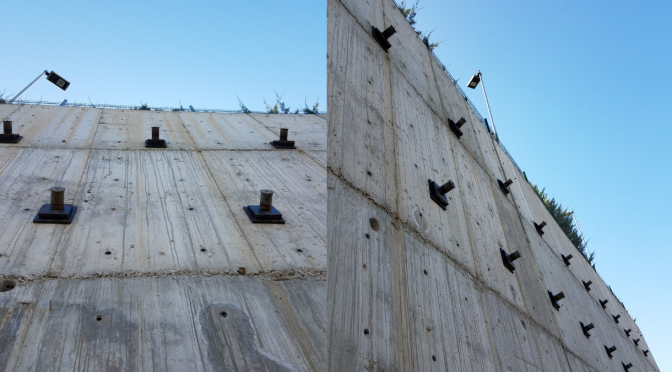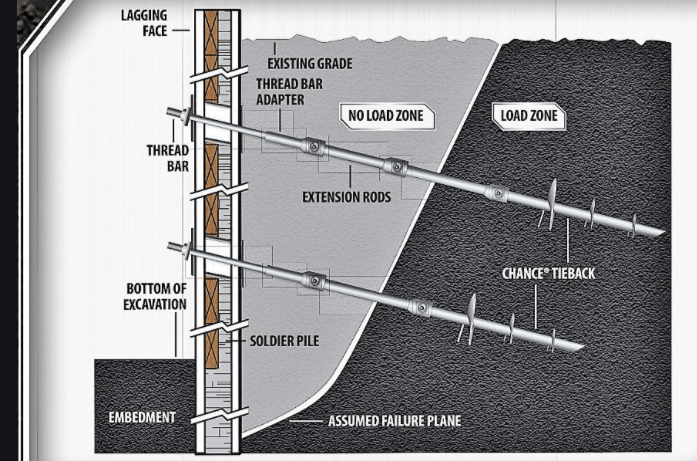Anchored retaining wall system is a structural element installed through the rock or soil to transfer the tensile forces developed in the structure to the ground. Anchored retaining walls are often slimmer than all their counterparts like gravity walls and cantilever retaining walls.
- Anchored retaining wall or Tie back system – Installation method.
- Fixing of anchors in a tie-back system
- Advantages of anchored retaining walls
- Youtube video – 15 Types of Retaining wall systems
Anchored retaining wall or Tie back system – Installation method.
Anchored retaining wall is also known as a tie-back system. They are used in combination with cantilever retaining walls, piled retaining walls, sheet piles, tangent walls, etc. The Tie-back system enhances the stability of the structure and plays an important role in equipping the walls to handle additional loads.
The anchored walls are installed when the load acting on the structure is high. In this case, the design of cantilever retaining walls / piled retaining walls/ sheet piles etc seems uneconomical. Moreover, it is difficult to accommodate the foundation and structures due to space constraints. For enhancing the load-carrying capacity and economising the structure additional anchors are embedded in the earth to be stabilised. These anchors in combination with the main structure negotiate the loads.
Related posts from vincivilworld
Also Read : Soil Nailing – Installation, Advantages and applications.
Fixing of anchors in a tie-back system
One end of the tieback is anchored to the wall and another end is driven to the soil/rock. Sometimes stable concrete structures are driven into the ground to get a good anchorage. Tiebacks and drilled through the wall to the soil at an angle of around 15-45 degrees.
After drilling the holes ties or struts are provided inside the drilled holes and pressure grouted to give greater stability. In the case of piled retaining walls, the tie-back system is drilled through whaler beams installed between the piles as shown in the figure. Steel rods are placed inside the drilled holes and grouted under high pressure. This creates a bulb-like anchor at the rods’ end, preventing the tie-backs from pulling out the load.
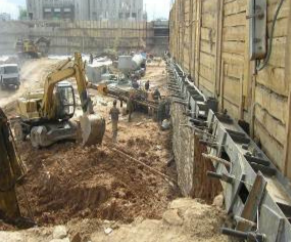
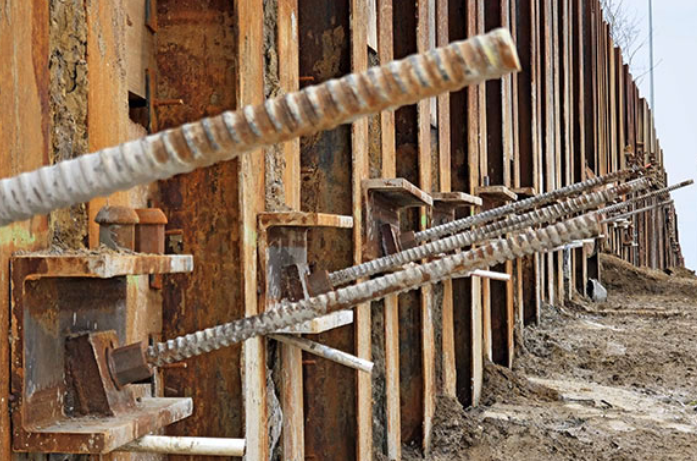
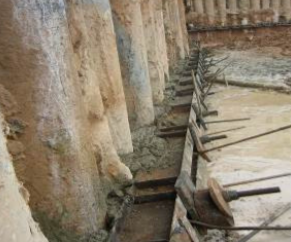
These walls can be very tall and support high loads and are ideal for smaller areas that need earth retention.
Some times instead of rods, helical anchors are also driven to in place and the capacities are decided by the torque required for tightening the anchors.
The main purpose of the tieback system is to develop a strong soil mass to resist external failure modes. The moment of soil and wall has to be restricted to get better serviceability.
Advantages of anchored retaining walls
- Mostly used for slope protection and retaining earthworks of deep excavations.
- Thin walls or very light structures can be designed in combination with anchored walls.
- Anchored walls are one of the most economical systems of earth retention.
- Combination with sheet piles, cantilever retaining walls, piled retaining walls etc are very useful for deep excavations to provide a safe working area.
For more details about the retaining walls watch the below video.

